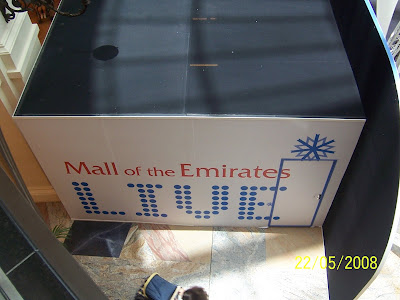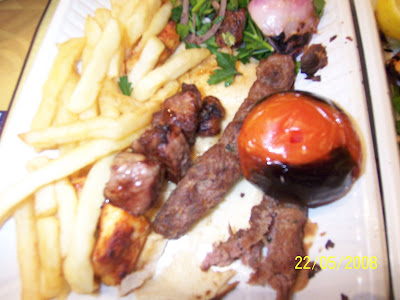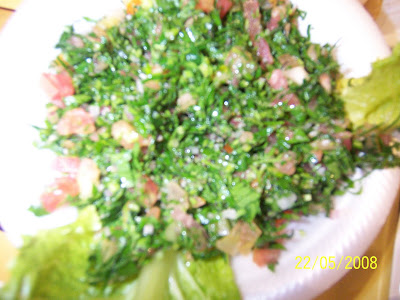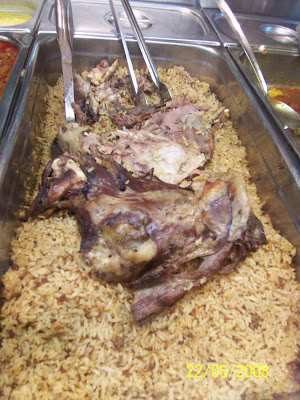Image: from many sources
Find information about the top tourist destinations of the world at a single place
Saturday, October 31, 2009
Agra, The Chosen City for Taj Mahal
Phuket - Old Town
Due to the Chinese, Portuguese and European influence in the early days, the Old Town here is populated mainly with Sino-Portuguese/ Sino-Colonial shophouses. These are the same as the ones you find in Penang, Malacca, Singapore and Kuching. There are many variations in the architectural details, but the basic design is a two-storey shophouse with a "five-footway" - essentially a multi-functional verandah serving as a covered pedestrian thoroughfare. On the ground floor is usually a shop, though in some of the units it is actually the living area. On the 1st floor is usually the living quarters. If you want to know more about Phuket heritage, go to this excellent web site - Phuket Heritage.
Old shophouses along Thalang Road.
 One thing I noticed in Phuket which is quite different are these gold shops. They are usually decked out to the nines in garish red and gold decors.
One thing I noticed in Phuket which is quite different are these gold shops. They are usually decked out to the nines in garish red and gold decors.

Phuket - Phuket Town
I hired a car, which is the best way to get around Phuket and it is very affordable. You can hire a Toyota Vios for around THB 1,000 per day. The landscape from the airport to Phuket town is very familiar to someone coming from Malaysia.
Phuket Airport is around 30 km from Phuket Town - about 40 min driving time. There are only a few major roads so driving around is not a big problem. All you need is a good map, and I had GPS on my phone which was a great help.
As I entered Phuket Town, I got a strange feeling of deja vu. The 2 and 3-storey buildings are very similar to the ones in smaller towns back in Malaysia. As you enter the older parts of town, you could be in Penang or Malacca. The old shophouses look exactly the same - with their Sino-Portuguese/ Sino-Colonial architecture which is common in many South-East Asian towns.
Entering into Phuket Town.


 Phuket has a large Chinese and Muslim population. You see many Chinese temples around, as well as mosques - often on the same street.
Phuket has a large Chinese and Muslim population. You see many Chinese temples around, as well as mosques - often on the same street. These buses converted from trucks are quite common in Phuket. They come in small, medium and large sizes. It is difficult to imagine enduring a long trip on these "buses", but the locals don't seem to mind.
These buses converted from trucks are quite common in Phuket. They come in small, medium and large sizes. It is difficult to imagine enduring a long trip on these "buses", but the locals don't seem to mind. One thing really great about Phuket traffic system is the traffic light. They actually have count-down meters which show you exactly how many seconds left before change of light. I think this great idea should be adopted everywhere.
One thing really great about Phuket traffic system is the traffic light. They actually have count-down meters which show you exactly how many seconds left before change of light. I think this great idea should be adopted everywhere.
KEUKENHOF GARDENS

However it is not only the tulip that the Keukenhof celebrates. All bulbous plants are showcased here as well as perennials. There is also a great display of stunning orchids, over 35,000 lilies, daffodils, hyacinths, narcissus and much more. There are many garden sculptures throughout the grounds and over 2,500 trees, many of which are very old.
The gardens are primarily designed in the classic English landscape style but contain many examples of other garden styles. It is this diversity that makes the Keukenhof so inspiring. For example the charming nature gardens combine wild bulbous plants with perennials and shrubs, and is truly enchanting. There are the fascinating historic gardens which including ancient herbs (culinary and medicinal) and also very old tulip varieties, and the very elegant Japanese country garden. The current park was a section of the sizeable estate of Slot Teylingen, with beautiful untamed bushes and dunes. After the decease of Jacoba van Beieren Keukenhof fell into the hands of rich merchant families. Baron and baroness Van Pallandt invited landscape architects J.D. and L.P. Zocher, designers of the Amsterdam Vondelpark, to make a design for the garden around the castle. This design, in the English landscape style, has always been the basis of Keukenhof.
At the moment the estate belongs to a Corporation. On the initiative of the Lisse mayor of that time and a number of leading flower bulb growers and exporters, an open air flower exhibition was organised here for the first time in 1949. This expanded to an annually recurring event that has always drawn great numbers of visitors from all over the world. This is how Keukenhof became the park that we now know.




Friday, October 30, 2009
The Mall Of Emirates Dubai.
 The Mall Of Emirates Dubai.
The Mall Of Emirates Dubai. The Mall Of Emirates Dubai.
The Mall Of Emirates Dubai. Mall of Emirates is the biggest mall in Dubai and it is really huge. After all the walking we were hungry and
Mall of Emirates is the biggest mall in Dubai and it is really huge. After all the walking we were hungry and
The Mall Of Emirates Dubai.
 ended up in a food court stall selling Lebanese foods. Beirut, we ordered
ended up in a food court stall selling Lebanese foods. Beirut, we ordered  Hommos,
Hommos,  grill chicken, beef, lamb,
grill chicken, beef, lamb, shrimps, fish,
shrimps, fish,  khash khash kebab
khash khash kebabVeges salad “Tabbouleh” was good.
 And served with a lot of nan breads.
And served with a lot of nan breads.The foods tasted good especially the Hommos &
 Tabbouleh.
Tabbouleh.Gary arranged to meet up with two Malaysian contractors and shared their work experiences here in Dubai. These gentlemen by the names of Terry & Chop have been in Dubai for the last 4 over years. Things are not as rosy but need lots of hard works to survive in this part of the world.
 They took the chicken and lamb rice, something like nasi beriani.
They took the chicken and lamb rice, something like nasi beriani. The Mall Of Emirates Dubai.
The Mall Of Emirates Dubai. They even have snow ski in the mall.
They even have snow ski in the mall. Travel in Lombok Indonesia
 The island of Lombok which means 'Chilli' in Indonesian is located to the east of Bali. From the small black sand bays of Sengiggi, some of the most spectacular sunsets on the planet can be witnessed. The pace of life is slow to the point of stopping and the southern coast of Lombok has some of the most stunning beaches in Indonesia. From silhouetted palms, to mist ringed volcanoes, Lombok island is a haven of natural beauty and just the ticket for getting away from it all which explains the recent popularity of Lombok in recent years. Most tourists make the trip to here to get away from the hustle and bustle of nearby Bali and enjoy the serene beaches.
The island of Lombok which means 'Chilli' in Indonesian is located to the east of Bali. From the small black sand bays of Sengiggi, some of the most spectacular sunsets on the planet can be witnessed. The pace of life is slow to the point of stopping and the southern coast of Lombok has some of the most stunning beaches in Indonesia. From silhouetted palms, to mist ringed volcanoes, Lombok island is a haven of natural beauty and just the ticket for getting away from it all which explains the recent popularity of Lombok in recent years. Most tourists make the trip to here to get away from the hustle and bustle of nearby Bali and enjoy the serene beaches. The flight from Bali to Lombok’s Mataram airport takes just 30 minutes but upon arrival its like stepping into a different era altogether. Getting around is quite convenient with reasonably priced Bemo (converted minivans) or the tourist favourite Cidomo (horse pulled cart).
The flight from Bali to Lombok’s Mataram airport takes just 30 minutes but upon arrival its like stepping into a different era altogether. Getting around is quite convenient with reasonably priced Bemo (converted minivans) or the tourist favourite Cidomo (horse pulled cart).The local inhabitants of Lombok are called Sasaks. They speak Indonesian as well as their local Sasak language. The other main ethnicity’s include Balinese, Chinese, Arabian, and Javanese. Lombok has three main districts with three capital cities: Mataram in the west, Praya in central and Selong in east Lombok. The majority of commerce is in the capital city of Mataram in west Lombok.
 When it comes to souvenirs from Lombok, its a choice between their woven textiles or potteries which is being exported throughout the world. There are also many traditional handicrafts you could take back as a souvenir i.e; wooden masks, baskets made out of ketak grass, wooden boxes designed with bits of shells, or other things made from bamboo or rattan.
When it comes to souvenirs from Lombok, its a choice between their woven textiles or potteries which is being exported throughout the world. There are also many traditional handicrafts you could take back as a souvenir i.e; wooden masks, baskets made out of ketak grass, wooden boxes designed with bits of shells, or other things made from bamboo or rattan.At the end of the day, Lombok's charm truly lies in its century-old, tranquil coastal areas with virgin white beaches and green mountains.
 Some of the major attractions are:
Some of the major attractions are:- Mt. Rinjani
- Sendanggile Waterfalls
- Gili Islands
- Mayura Water Palace
- Masbagik Village
- Narmada Palace
- Pura Meru Temple
- Lombok Pottery & Weaving
- Sasak Village
- Mataram Museum
Happy Travel : Travel in Pattaya Thailand
When it comes to wholesome family activities, there is none other than visiting the beaches or half-day island hopping. The 2 more notable beaches are Pattaya Beach and Jomtien Beach.

The main downtown area is definately all within walking distance and easy to get around. The highlight of the day would be the closure of South Pattaya Road between 6pm-2am daily to be transformed into the ever famous Walking Street which is in itself a major tourist attraction for al
 l the food, shopping and nightlife. The safest and easiest way to travel around in the evening is by songthaews (pickup trucks converted to buses) which will cost approximately about 10 baht for foreingers. The largest shopping centre with modern shops and facilities would be Royal Garden Plaza located adjacent to the Pattaya Marriott Hotel.
l the food, shopping and nightlife. The safest and easiest way to travel around in the evening is by songthaews (pickup trucks converted to buses) which will cost approximately about 10 baht for foreingers. The largest shopping centre with modern shops and facilities would be Royal Garden Plaza located adjacent to the Pattaya Marriott Hotel.Some of the other major attractions are:
- Underwater World Pattaya
- Oasis Seaworld
- Elephant Village
- Nong Nooch Tropical Garden
- Buddha Hill














